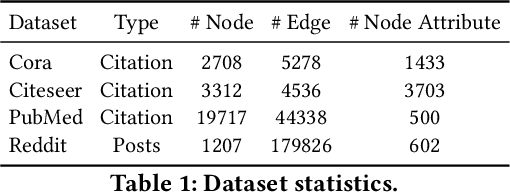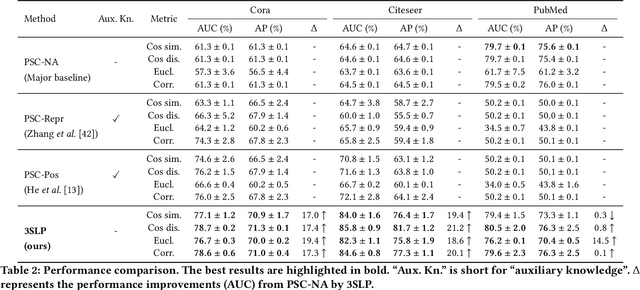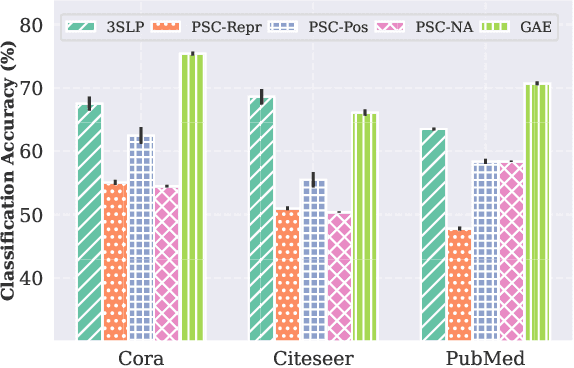Weiqi Wang
Can LLMs Generate Tabular Summaries of Science Papers? Rethinking the Evaluation Protocol
Apr 14, 2025Abstract:Literature review tables are essential for summarizing and comparing collections of scientific papers. We explore the task of generating tables that best fulfill a user's informational needs given a collection of scientific papers. Building on recent work (Newman et al., 2024), we extend prior approaches to address real-world complexities through a combination of LLM-based methods and human annotations. Our contributions focus on three key challenges encountered in real-world use: (i) User prompts are often under-specified; (ii) Retrieved candidate papers frequently contain irrelevant content; and (iii) Task evaluation should move beyond shallow text similarity techniques and instead assess the utility of inferred tables for information-seeking tasks (e.g., comparing papers). To support reproducible evaluation, we introduce ARXIV2TABLE, a more realistic and challenging benchmark for this task, along with a novel approach to improve literature review table generation in real-world scenarios. Our extensive experiments on this benchmark show that both open-weight and proprietary LLMs struggle with the task, highlighting its difficulty and the need for further advancements. Our dataset and code are available at https://github.com/JHU-CLSP/arXiv2Table.
CLAIMCHECK: How Grounded are LLM Critiques of Scientific Papers?
Mar 27, 2025Abstract:A core part of scientific peer review involves providing expert critiques that directly assess the scientific claims a paper makes. While it is now possible to automatically generate plausible (if generic) reviews, ensuring that these reviews are sound and grounded in the papers' claims remains challenging. To facilitate LLM benchmarking on these challenges, we introduce CLAIMCHECK, an annotated dataset of NeurIPS 2023 and 2024 submissions and reviews mined from OpenReview. CLAIMCHECK is richly annotated by ML experts for weakness statements in the reviews and the paper claims that they dispute, as well as fine-grained labels of the validity, objectivity, and type of the identified weaknesses. We benchmark several LLMs on three claim-centric tasks supported by CLAIMCHECK, requiring models to (1) associate weaknesses with the claims they dispute, (2) predict fine-grained labels for weaknesses and rewrite the weaknesses to enhance their specificity, and (3) verify a paper's claims with grounded reasoning. Our experiments reveal that cutting-edge LLMs, while capable of predicting weakness labels in (2), continue to underperform relative to human experts on all other tasks.
SCU: An Efficient Machine Unlearning Scheme for Deep Learning Enabled Semantic Communications
Feb 27, 2025Abstract:Deep learning (DL) enabled semantic communications leverage DL to train encoders and decoders (codecs) to extract and recover semantic information. However, most semantic training datasets contain personal private information. Such concerns call for enormous requirements for specified data erasure from semantic codecs when previous users hope to move their data from the semantic system. {Existing machine unlearning solutions remove data contribution from trained models, yet usually in supervised sole model scenarios. These methods are infeasible in semantic communications that often need to jointly train unsupervised encoders and decoders.} In this paper, we investigate the unlearning problem in DL-enabled semantic communications and propose a semantic communication unlearning (SCU) scheme to tackle the problem. {SCU includes two key components. Firstly,} we customize the joint unlearning method for semantic codecs, including the encoder and decoder, by minimizing mutual information between the learned semantic representation and the erased samples. {Secondly,} to compensate for semantic model utility degradation caused by unlearning, we propose a contrastive compensation method, which considers the erased data as the negative samples and the remaining data as the positive samples to retrain the unlearned semantic models contrastively. Theoretical analysis and extensive experimental results on three representative datasets demonstrate the effectiveness and efficiency of our proposed methods.
TAPE: Tailored Posterior Difference for Auditing of Machine Unlearning
Feb 27, 2025Abstract:With the increasing prevalence of Web-based platforms handling vast amounts of user data, machine unlearning has emerged as a crucial mechanism to uphold users' right to be forgotten, enabling individuals to request the removal of their specified data from trained models. However, the auditing of machine unlearning processes remains significantly underexplored. Although some existing methods offer unlearning auditing by leveraging backdoors, these backdoor-based approaches are inefficient and impractical, as they necessitate involvement in the initial model training process to embed the backdoors. In this paper, we propose a TAilored Posterior diffErence (TAPE) method to provide unlearning auditing independently of original model training. We observe that the process of machine unlearning inherently introduces changes in the model, which contains information related to the erased data. TAPE leverages unlearning model differences to assess how much information has been removed through the unlearning operation. Firstly, TAPE mimics the unlearned posterior differences by quickly building unlearned shadow models based on first-order influence estimation. Secondly, we train a Reconstructor model to extract and evaluate the private information of the unlearned posterior differences to audit unlearning. Existing privacy reconstructing methods based on posterior differences are only feasible for model updates of a single sample. To enable the reconstruction effective for multi-sample unlearning requests, we propose two strategies, unlearned data perturbation and unlearned influence-based division, to augment the posterior difference. Extensive experimental results indicate the significant superiority of TAPE over the state-of-the-art unlearning verification methods, at least 4.5$\times$ efficiency speedup and supporting the auditing for broader unlearning scenarios.
Patterns Over Principles: The Fragility of Inductive Reasoning in LLMs under Noisy Observations
Feb 22, 2025Abstract:Inductive reasoning, a cornerstone of human cognition, enables generalization from limited data but hasn't yet been fully achieved by large language models (LLMs). While modern LLMs excel at reasoning tasks, their ability to maintain stable and consistent rule abstraction under imperfect observations remains underexplored. To fill this gap, in this work, we introduce Robust Rule Induction, a task that evaluates LLMs' capability in inferring rules from data that are fused with noisy examples. To address this task, we further propose Sample-steered Rule Refinement (SRR), a method enhancing reasoning stability via observation diversification and execution-guided feedback. Experiments across arithmetic, cryptography, and list functions reveal: (1) SRR outperforms other methods with minimal performance degradation under noise; (2) Despite slight accuracy variation, LLMs exhibit instability under noise (e.g., 0% accuracy change with only 70% consistent score); (3) Counterfactual task gaps highlight LLMs' reliance on memorized patterns over genuine abstraction. Our findings challenge LLMs' reasoning robustness, revealing susceptibility to hypothesis drift and pattern overfitting, while providing empirical evidence critical for developing human-like inductive systems. Code and data are available at \href{https://github.com/lcy2723/Robust-Rule-Induction}{https://github.com/lcy2723/Robust-Rule-Induction}.
Intention Knowledge Graph Construction for User Intention Relation Modeling
Dec 16, 2024Abstract:Understanding user intentions is challenging for online platforms. Recent work on intention knowledge graphs addresses this but often lacks focus on connecting intentions, which is crucial for modeling user behavior and predicting future actions. This paper introduces a framework to automatically generate an intention knowledge graph, capturing connections between user intentions. Using the Amazon m2 dataset, we construct an intention graph with 351 million edges, demonstrating high plausibility and acceptance. Our model effectively predicts new session intentions and enhances product recommendations, outperforming previous state-of-the-art methods and showcasing the approach's practical utility.
ConceptEdit: Conceptualization-Augmented Knowledge Editing in Large Language Models for Commonsense Reasoning
Dec 16, 2024



Abstract:Knowledge Editing (KE) aims to adjust a Large Language Model's (LLM) internal representations and parameters to correct inaccuracies and improve output consistency without incurring the computational expense of re-training the entire model. However, editing commonsense knowledge still faces difficulties, including limited knowledge coverage in existing resources, the infeasibility of annotating labels for an overabundance of commonsense knowledge, and the strict knowledge formats of current editing methods. In this paper, we address these challenges by presenting ConceptEdit, a framework that integrates conceptualization and instantiation into the KE pipeline for LLMs to enhance their commonsense reasoning capabilities. ConceptEdit dynamically diagnoses implausible commonsense knowledge within an LLM using another verifier LLM and augments the source knowledge to be edited with conceptualization for stronger generalizability. Experimental results demonstrate that LLMs enhanced with ConceptEdit successfully generate commonsense knowledge with improved plausibility compared to other baselines and achieve stronger performance across multiple question answering benchmarks.
Assessing the Robustness of Retrieval-Augmented Generation Systems in K-12 Educational Question Answering with Knowledge Discrepancies
Dec 12, 2024



Abstract:Retrieval-Augmented Generation (RAG) systems have demonstrated remarkable potential as question answering systems in the K-12 Education domain, where knowledge is typically queried within the restricted scope of authoritative textbooks. However, the discrepancy between textbooks and the parametric knowledge in Large Language Models (LLMs) could undermine the effectiveness of RAG systems. To systematically investigate the robustness of RAG systems under such knowledge discrepancies, we present EduKDQA, a question answering dataset that simulates knowledge discrepancies in real applications by applying hypothetical knowledge updates in answers and source documents. EduKDQA includes 3,005 questions covering five subjects, under a comprehensive question typology from the perspective of context utilization and knowledge integration. We conducted extensive experiments on retrieval and question answering performance. We find that most RAG systems suffer from a substantial performance drop in question answering with knowledge discrepancies, while questions that require integration of contextual knowledge and parametric knowledge pose a challenge to LLMs.
Can Self Supervision Rejuvenate Similarity-Based Link Prediction?
Oct 24, 2024



Abstract:Although recent advancements in end-to-end learning-based link prediction (LP) methods have shown remarkable capabilities, the significance of traditional similarity-based LP methods persists in unsupervised scenarios where there are no known link labels. However, the selection of node features for similarity computation in similarity-based LP can be challenging. Less informative node features can result in suboptimal LP performance. To address these challenges, we integrate self-supervised graph learning techniques into similarity-based LP and propose a novel method: Self-Supervised Similarity-based LP (3SLP). 3SLP is suitable for the unsupervised condition of similarity-based LP without the assistance of known link labels. Specifically, 3SLP introduces a dual-view contrastive node representation learning (DCNRL) with crafted data augmentation and node representation learning. DCNRL is dedicated to developing more informative node representations, replacing the node attributes as inputs in the similarity-based LP backbone. Extensive experiments over benchmark datasets demonstrate the salient improvement of 3SLP, outperforming the baseline of traditional similarity-based LP by up to 21.2% (AUC).
EcomEdit: An Automated E-commerce Knowledge Editing Framework for Enhanced Product and Purchase Intention Understanding
Oct 18, 2024



Abstract:Knowledge Editing (KE) aims to correct and update factual information in Large Language Models (LLMs) to ensure accuracy and relevance without computationally expensive fine-tuning. Though it has been proven effective in several domains, limited work has focused on its application within the e-commerce sector. However, there are naturally occurring scenarios that make KE necessary in this domain, such as the timely updating of product features and trending purchase intentions by customers, which necessitate further exploration. In this paper, we pioneer the application of KE in the e-commerce domain by presenting ECOMEDIT, an automated e-commerce knowledge editing framework tailored for e-commerce-related knowledge and tasks. Our framework leverages more powerful LLMs as judges to enable automatic knowledge conflict detection and incorporates conceptualization to enhance the semantic coverage of the knowledge to be edited. Through extensive experiments, we demonstrate the effectiveness of ECOMEDIT in improving LLMs' understanding of product descriptions and purchase intentions. We also show that LLMs, after our editing, can achieve stronger performance on downstream e-commerce tasks.
 Add to Chrome
Add to Chrome Add to Firefox
Add to Firefox Add to Edge
Add to Edge